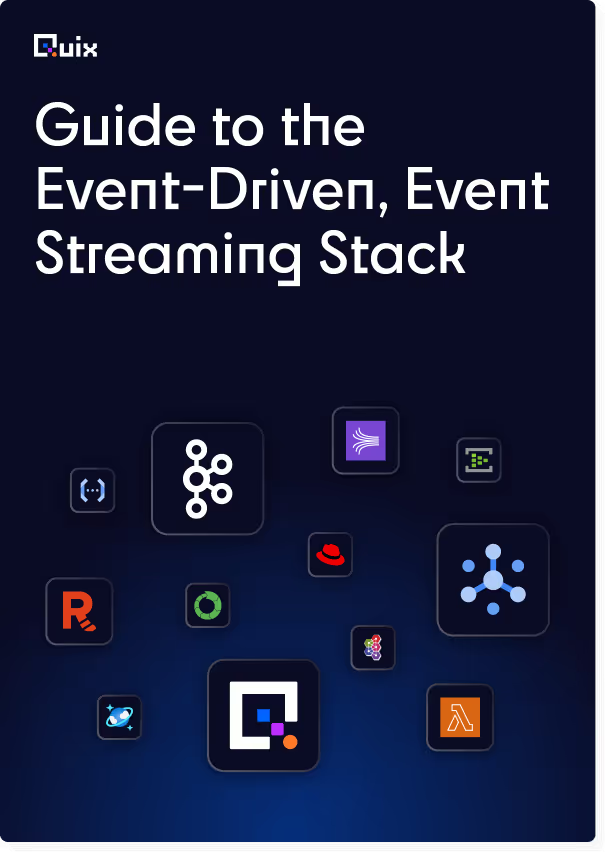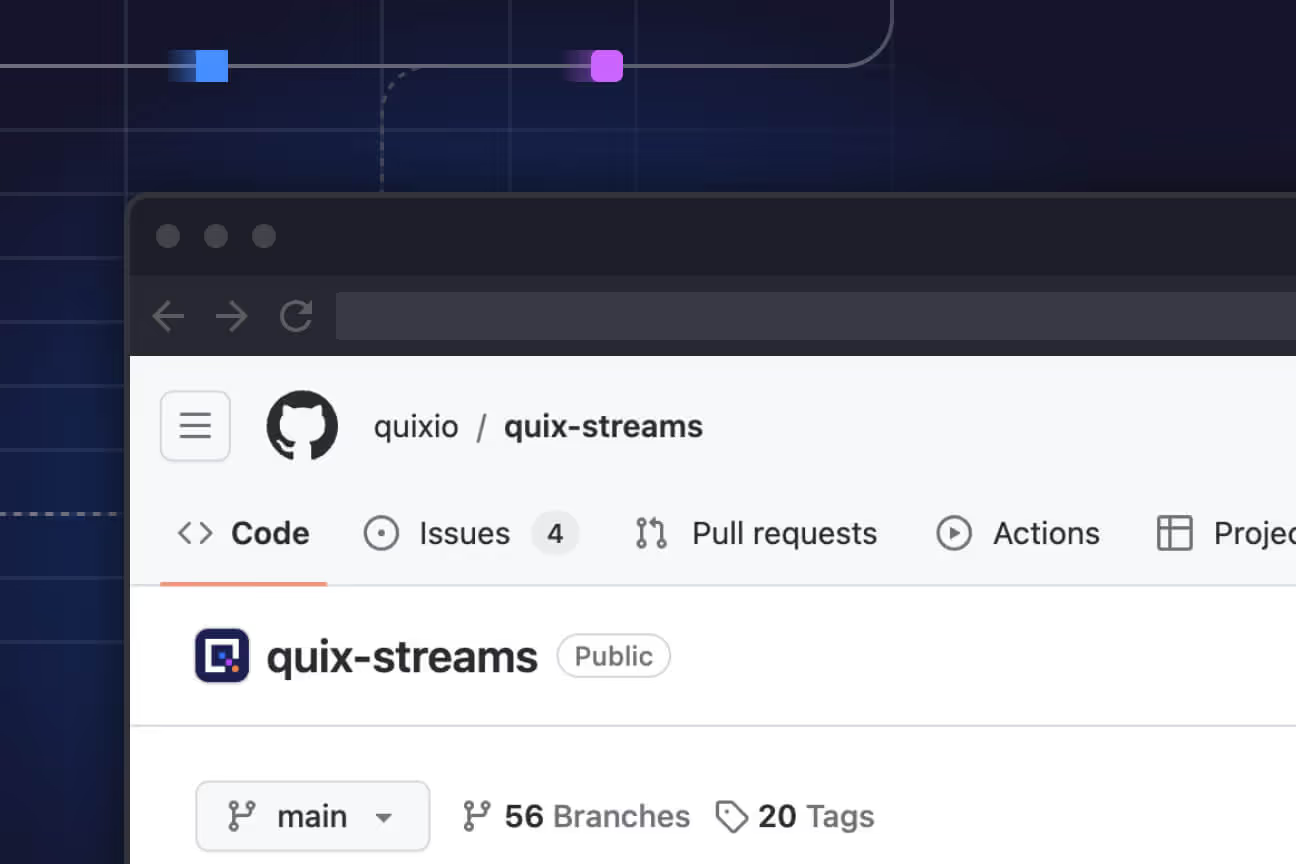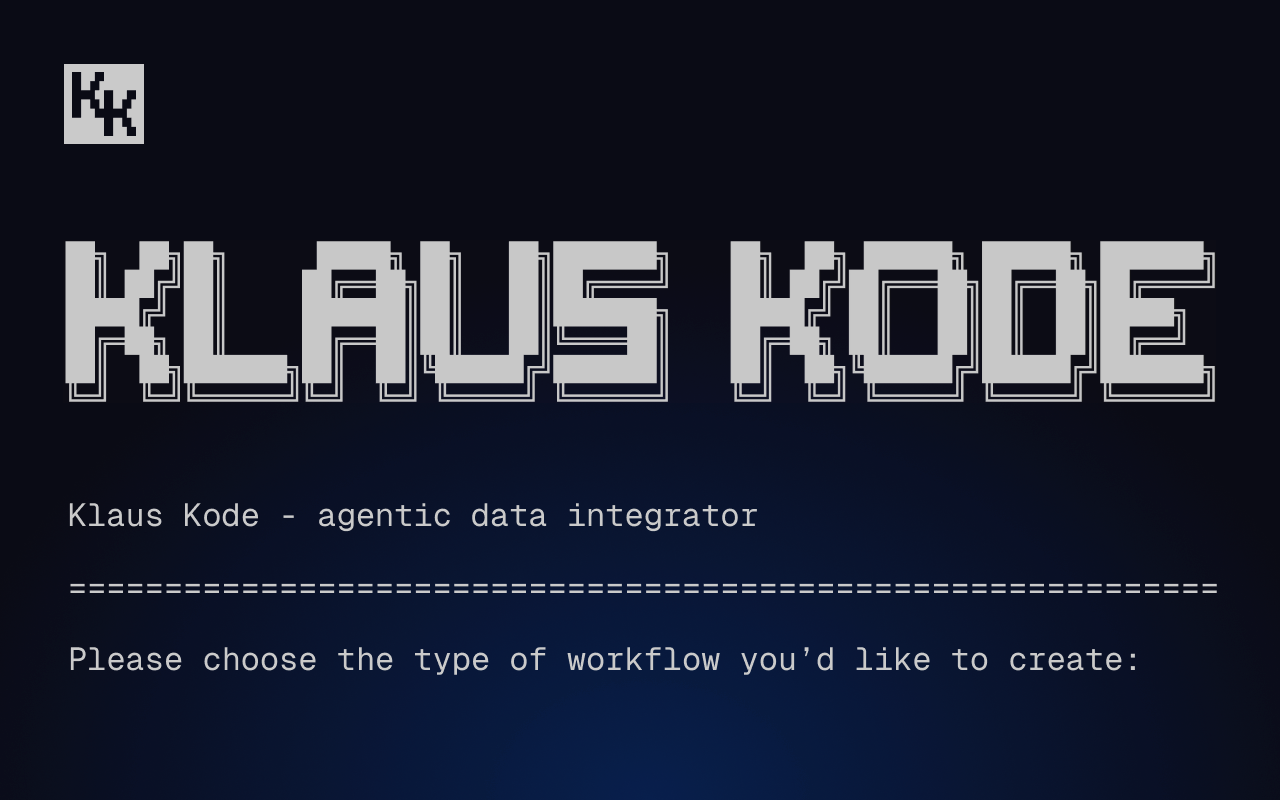Navigating stateful stream processing
Discover what sets stateful stream processing apart from stateless processing and read about its related concepts, challenges and use cases.

What is stateful stream processing?
Similar to stateless stream processing, stateful stream processing involves continuously processing streaming data. But, going beyond this common denominator, stateful and stateless processing are fundamentally different. In stateless processing, each piece of data is processed independently, with no memory of previous events.
Meanwhile, stateful stream processing maintains a memory of past events. This memory, or "state", allows the processing system to track changes over time or across different data points. It also enables the system to perform complex calculations that depend on the sequence or accumulation of data points.
For example, in a ride-sharing application, stateful stream processing can dynamically match drivers with nearby ride requests by maintaining a continuously updated state of drivers' locations and their availability status. This state is crucial for making real-time decisions on the best driver for each ride based on proximity and driver status.
Stateless vs. stateful stream processing
Stateful and stateless processing are the two main approaches for processing streaming data. But how are they different?
As mentioned before, stateless stream processing involves handling each event in isolation, without considering past (or future) events.

This method is best suited for scenarios where the latest event is the most important one and there's no need for historical context. For instance, counting the number of visitors on a website in real time. Or creating real-time alerts for threshold violations (e.g., temperature spikes).
Stateless stream processing offers some significant benefits:
- It’s straightforward to implement and easy to scale (i.e., you simply add more workers).
- Recovery from failures is fast, as there is no state to restore or reconstruct.
- Lower latency, computational and memory requirements compared to stateful processing (since there's no need to access or update state information, which can add overhead).
- Independent events can be processed in parallel without concern for ordering or state consistency.
However, going beyond its advantages, stateless stream processing has some serious drawbacks, such as:
- You can’t join or aggregate data.
- Ineffective for use cases where deduplication, event ordering and exactly-once semantics are critical.
- Unsuitable for complex computations that require knowledge of past events or state. This means you can’t really use stateless processing to identify patterns.
In contrast, stateful stream processing maintains information about past events, enabling operations that rely on the history or state of the data stream.

This approach is necessary for use cases that require an understanding of event sequences or cumulative data, such as tracking user sessions on a website or monitoring stock prices for trend analysis. The stateful approach brings the following advantages:
- It enables us to analyze patterns, sequences and relationships within data by leveraging historical context and aggregating events over time.
- It supports time-based operations such as windowing.
- It allows us to maintain and manipulate state across events, offering deeper insights and more sophisticated data processing capabilities.
- Allows for real-time decisions and dynamic computations based on the evolving context within a stream, enabling applications to respond to complex patterns or trends as they develop.
That’s not to say that stateful stream processing is without its flaws. State is notoriously hard to handle, which makes stateful stream processing much more difficult to implement than stateless processing (I talk more about the challenges of stateful processing later in this article). On the other hand, stateful processing unlocks new use cases that you simply can’t achieve with stateless processing.
Managing state in stream processing
Managing state is a vital consideration when dealing with stateful stream processing. This entails things such as:
- Keeping track of the current state of the system to maintain continuity and coherence across data interactions.
- Ensuring that state remains consistent across different components or nodes. This might involve consensus algorithms in distributed systems or synchronization mechanisms in client-server architectures.
- Handling the update and modification of the state in a controlled and predictable manner, often through well-defined interfaces or functions to prevent unpredictable behavior or inconsistencies.
- Partitioning or sharding the state across multiple nodes or instances, to improve performance and manageability.
- Implementing strategies for recovering the state after failures to ensure the system can resume operation with minimal data loss or downtime. This includes checkpointing and log replay mechanisms.
- Storing state. Many stateful data processing systems often utilize in-memory data structures for fast access and updates, combined with persistent storage solutions (like distributed databases or filesystems) for durability and recovery purposes. This hybrid approach ensures that the state can be quickly accessed and modified while also being recoverable in case of system failures.
Key concepts and operations related to stateful stream processing
Now that we’ve defined stateful stream processing (and reviewed how it’s different from stateless processing), it’s time to review some key concepts and mechanisms that are tightly related to it.
Windowing
Windowing is a technique that’s used to divide a continuous data stream into finite chunks (called windows) based on time or other properties (e.g., the count of events). In essence, windowing helps us turn unbounded data into bounded data streams. This division enables us to apply stateful operations like joins and aggregations to these smaller, finite sets of events.
There are different types of windows you can use for stateful stream processing. Here are the most common ones:
- Tumbling windows allow for the processing of data in fixed-size, contiguous, non-overlapping chunks. They are great for calculating moving averages over fixed time intervals.
- Hopping windows enable us to process data in fixed-size segments that overlap and “hop” (advance) forward in time at a specified interval. They are ideal for use cases that require continuous, detailed analysis with overlap to smooth out data variability and ensure no event is missed.
- Sliding windows are used to group events within an interval that slides over time. They are best suited for use cases that demand continuous, real-time analysis. For example, you could leverage sliding windows to aggregate sensor data from machinery components (such as temperature, vibration, or pressure) to detect patterns or trends that may indicate equipment failure.
- Session windows group events into dynamic intervals based on activity, filtering out periods of time when nothing happens. They are a great choice for scenarios where you need to analyze user activity (e.g., analyzing browsing sessions to identify paths to purchase and optimize the online shopping experience for online buyers).

To learn more about the different types of windows, their benefits and use cases, check out our guide to windowing in stream processing.
Stateful computations
Unlike stateless computations (where the outcome of a process depends solely on the current input), stateful computations refer to operations that leverage historical data (previous state) to make decisions or calculate results for incoming data. There are various types of stateful computations, including aggregations (such as running totals and top-N items), joins and windowed computations (e.g., sliding window averages or tumbling window counts). Let’s look at a few fictional examples to better put things into perspective.
Here’s a snippet indicating how you can calculate the running total of a user's transactions over time to display their current balance in a banking app:
transactions = [100, -50, 200, -100] # Positive values are deposits, negative values are withdrawals
current_balance = 150 # Initial balance
# Iterate over each transaction
for transaction in transactions:
current_balance += transaction # Update the balance with each transaction
print(f"Current balance: {current_balance}") # Print the balance after each transaction
The balance is continually updated each time a new transaction (deposit/withdrawal) occurs.
For our second example, imagine you want to continuously monitor equipment in a manufacturing plant. For this purpose, you want to join event streams that correlate sensor readings with equipment status updates. You’re also aiming to enrich sensor data with the latest equipment status whenever a status update occurs. Here’s how you might go about it:
# Simulated stream of sensor readings
sensor_readings = [
{'timestamp': 1, 'machine_id': 'A', 'sensor_value': 0.5},
{'timestamp': 2, 'machine_id': 'B', 'sensor_value': 0.7},
# more sensor readings...
]
# Simulated stream of equipment status updates
status_updates = [
{'timestamp': 1, 'machine_id': 'A', 'status': 'normal'},
{'timestamp': 2, 'machine_id': 'B', 'status': 'warning'},
# more status updates...
]
# Function to join sensor readings with the latest status updates
def join_streams(sensor_readings, status_updates):
# Keeping the latest status for each machine
latest_status = {}
joined_data = []
# Update the latest status based on status_updates stream
for update in status_updates:
latest_status[update['machine_id']] = update['status']
# Join sensor readings with the latest known status
for reading in sensor_readings:
machine_id = reading['machine_id']
if machine_id in latest_status:
# Enrich sensor reading with the latest status
enriched_reading = dict(reading)
enriched_reading['status'] = latest_status[machine_id]
joined_data.append(enriched_reading)
return joined_data
# Example of processing the streams
joined_data = join_streams(sensor_readings, status_updates)
print(joined_data)
In this snippet above, latest_status acts as the state holding the most recent status update for each machine. Each sensor reading is then joined with this latest status, providing a continuous, stateful join of the two streams. The output looks like this:
[
{'timestamp': 1, 'machine_id': 'A', 'sensor_value': 0.5, 'status': 'normal'},
{'timestamp': 2, 'machine_id': 'B', 'sensor_value': 0.7, 'status': 'warning'}
]
As our third and final example, here's a snippet showing how to calculate a moving average of stock prices using a tumbling window:
stock_prices = [10, 12, 11, 13, 14, 15, 16, 17, 19]
window_size = 3
for i in range(0, len(stock_prices) - window_size + 1, window_size):
window = stock_prices[i:i + window_size]
window_average = sum(window) / window_size
print(f"Average price in window: {window_average}")
For each window, the code computes the average of three prices and prints the result. The tumbling window moves through the stock_prices list in steps equal to the window_size, ensuring that each price is only included in one window.
Watermarks
Watermarking is a mechanism that allows us to handle late, out-of-order events (which are quite frequent when it comes to data streams). Note that watermarking is commonly used when working with windows. In essence, a watermark specifies a threshold (grace period) that indicates how long the system waits for late events.
For instance, let’s assume we have a stream processing system that aggregates events in 5-minute windows. If an aggregation window ends at 12:05 and a watermark with a 1-minute buffer is used, the system waits until 12:06 (1 minute after the window technically closes) to start processing data for the window that ended at 12:05. The watermark guarantees that the system accommodates events with timestamps indicating they were intended for the 12:05 aggregation window, despite arriving late.

Watermarks are vital for ensuring accurate data processing, especially in applications where the order and timeliness of events are paramount.
Checkpoints
Checkpointing is a mechanism designed to ensure fault tolerance and data consistency. It works by periodically capturing the state of a stream processing application at specific points in time. By using checkpoints (also known as snapshots), the system can recover from failures by restoring the state to a known good point.

There are two main types of checkpoints: full checkpoints and incremental checkpoints. Full checkpoints involve capturing the complete state of the application at a checkpoint interval. As each checkpoint contains a complete snapshot of the state, rolling back to a known good state is straightforward. However, this approach can be resource-intensive due to the volume of data.
In comparison, incremental checkpoints only capture the changes in state since the last checkpoint. This approach significantly reduces the computational overhead and storage requirements, as only changes since the last checkpoint are stored. On the other hand, using incremental checkpoints can lead to a more complex recovery process, where you have to reconstruct the state from multiple snapshots.
Stateful stream processing use cases
Stateful stream processing often plays a key role in event-driven applications, streaming applications, streaming data pipelines, ML pipelines and streaming ETL architectures. It enables complex data interactions and sophisticated data transformations, helping businesses enhance operational efficiency and real-time decision-making.
Below, I list some of the features, capabilities and experiences that are commonly powered by stateful stream processing.

Fraud detection
Financial institutions employ stateful stream processing to analyze transactions in real time (and compare them to previous ones) to detect patterns and anomalies. This allows banks to identify potential fraud as it happens, reducing losses and enhancing customer trust.
Personalization
In e-commerce, stateful stream processing underpins clickstream analysis. By analyzing user interactions in real time, online shops can tailor and serve content and recommendations based on individual preferences, boosting user engagement and conversion rates.
Related reading: Learn how to analyze clickstream data in real time and trigger special offers based on user behavior
IoT
Stateful stream processing is essential for managing data from sensors and devices. It enables real-time monitoring, control and optimization of IoT ecosystems across smart homes and industrial automation.
Monitoring
Stateful stream processing is crucial for real-time monitoring across networks, IT systems and applications. It facilitates the detection of performance issues, security threats and operational anomalies.
Predictive maintenance
Stateful stream processing helps us continuously analyze unbounded streams of data from machinery and equipment, so we can identify patterns and predict failures before they occur. This helps reduce downtime and maintenance costs in industries like manufacturing, energy, and transportation.
Related reading: Learn how to predict 3D printer failures in real time
Time series analysis
Stateful stream processing is leveraged to analyze sequential time series data points collected over time, such as financial market data, meteorological data or user activity logs. Stateful stream processing empowers real-time trend analysis, anomaly detection and forecasting.
Related reading: A gentle introduction to time series analysis
Challenges of stateful stream processing
Designing and operating a reliable stateful stream processing system is a difficult task. Let’s review the main challenges you will encounter.
Achieving exactly-once semantics
Exactly-once processing semantics is the golden standard for data integrity and accuracy. However, achieving exactly-once processing is a formidable challenge. Due to network failures, software bugs or other disruptions, messages can be lost or processed multiple times. To prevent this from happening, you have to resort to mechanisms like:
- Idempotency, which guarantees that performing the same operation multiple times will yield the same result as if it was executed only once.
- Transactional state management, which ensures that all changes to the state are committed only if the entire transaction (i.e., the series of operations that make up the transaction) succeeds.
- Checkpointing, which allows the system to restart processing from the last checkpoint in case of a failure. This helps avoid data duplication and data loss.
These mechanisms significantly increase the complexity and overhead of the stream processing system, as they require additional storage, more sophisticated programming models and careful coordination across distributed components.
The complexity of dealing with state
While stateful stream processing enables richer, more dynamic data processing capabilities, managing state — its creation, updates and cleanup — is challenging, especially in a distributed system.
There are many related questions to answer and challenges to overcome. Here’s but a taste:
- How can I implement replication to maintain state integrity without introducing unacceptable latency?
- What are the best practices for balancing in-memory state management with the need for durable, persistent storage?
- How can I ensure the atomicity of state updates across distributed components to maintain data consistency?
- What consensus algorithm and synchronization mechanism are best for my use case?
- What approach should I take to secure state data, particularly in environments with stringent data protection regulations?
- How do different serialization/deserialization strategies for state affect performance and system resource usage, and which should I implement?
- How can I structure state updates and modifications to allow for both flexibility and predictability in response to evolving data streams?
- What methods ensure optimal state distribution for performance gains and system manageability in the context of partitioning or sharding?
- What strategies can I leverage to monitor state health and detect anomalies in real time?
- What state store should I use for state persistence, and how do I optimize it so it meets my scalability, speed and consistency requirements?
Ensuring fault tolerance
Fault tolerance is essential for any stateful stream processing system. The system must be able to recover from issues like hardware failures, network disruptions and software errors without losing important data or stopping operations. To achieve this, reliable safety measures must be implemented, including saving the system’s state at certain points (checkpointing), duplicating data (replication) and having backup plans for when something goes wrong (failover strategies). However, implementing these measures increases the system's complexity and resource requirements.
Handling data inconsistency
Techniques like distributed consensus algorithms (e.g., Raft or Paxos) are often used to maintain state consistency, but they come with trade-offs in terms of performance and complexity. For instance, these algorithms require multiple rounds of communication between nodes to agree on the state, which can increase latency. Additionally, implementing and maintaining these algorithms increases development and operational overhead.
Scaling the system
You can easily scale stateless stream processing horizontally by adding more processors that work independently. However, stateful stream processing is not as straightforward. You not only have to scale the server layer but also ensure that the state is consistently updated and accessible across all nodes. This need for state synchronization and consistency often leads to bottlenecks that don't exist in stateless architectures. It also makes it difficult to scale effectively without compromising performance.
Managing stateful stream processing in-house is difficult
The costs associated with managing a stateful streaming system in-house can be significant. These include the costs of hardware and storage resources, operational costs to manage and monitor the system and development costs to implement the necessary features and make the system scalable and fault tolerant. For many organizations, these costs can be a major barrier to adopting stateful stream processing. On top of that, implementing stateful stream processing can be a lengthy process.
For example, the Contentsquare engineering team worked for a year (!) to migrate from Apache Spark to another stateful stream processor, Apache Flink. It was a road riddled with challenges and gotchas they wished they had known earlier — you can read all about it here.
Stateful stream processing technologies
If you’re looking to implement stateful stream processing capabilities, there are multiple technologies to choose from. First, there are open-source stream processors like Apache Flink, Kafka Streams, Apache Storm and Apache Spark Structured Streaming. The main advantage is that you can flexibly customize and integrate them into diverse environments without licensing costs. The main downside is that they are challenging to manage in-house.
Related reading:
- Learn how Kafka Streams compares to Spark Structured Streaming
- Flink vs Spark vs Quix Streams: benchmarking stream processing client libraries
If you don’t have the time or desire to deal with open source stream processors, you can resort to managed solutions like Google Cloud DataFlow, Azure Stream Analytics or Amazon Managed Service for Apache Flink. These services offer quick deployment and managed infrastructure to simplify the setup, maintenance and use of stateful stream processing capabilities. The disadvantage is that they can lock you into a specific vendor's ecosystem and pricing model.
A rather recent trend worth mentioning is the emergence of Python-based stream processing technologies. This is interesting to see, because streaming technologies have traditionally been Java-centric. But there are good reasons for merging Python and stateful stream processing: Python is becoming one of the most popular programming languages in the world (if not the most popular). It’s also the lingua franca of data science and machine learning, which have excellent synergy with streaming data and stream processing.
Quix is an example of a Python-based stream processor. Quix comes in two “flavors”:
- Quix Streams, an open source, cloud-native library for processing data in Kafka using pure Python. It’s designed to give you the power of a distributed processing engine in a lightweight library by combining the low-level scalability and resiliency features of Kafka with an easy-to-use Python interface. Quix Streams supports stateful operations using RocksDB.
- Quix Cloud, a fully managed platform that provides everything you need to build, deploy and manage industrial-strength stream processing applications using Python.
Check out this gallery of templates to see what kind of stream processing applications you can deliver with Quix.

Check out the repo
Our Python client library is open source, and brings DataFrames and the Python ecosystem to stream processing.

Interested in Quix Cloud?
Take a look around and explore the features of our platform.

Interested in Quix Cloud?
Take a look around and explore the features of our platform.

.svg)







